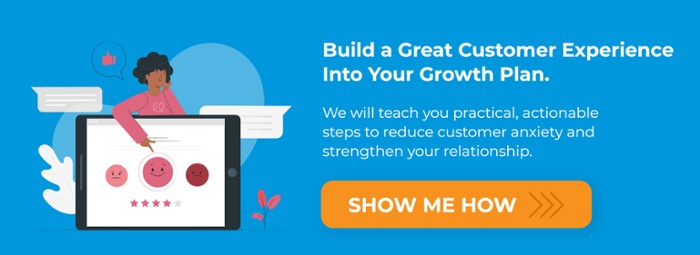
How to Plan a Healthcare Website Design
Patrick Dodge
Founder
Time to freshen up your website? Give yourself a little extra time for planning first.
After all, web redesigns are big projects. Even relatively small sites of 10 to 15 pages sometimes take anywhere from three to six months to complete. Sometimes longer.
Toss in some hefty compliance requirements on top of that -- and most healthcare companies have a few to manage -- and you will have a lot on your plate. It's best to think through the user intent, the tech you will use, how you will communicate with visitors, and several other factors before moving to the design phase. Otherwise, you may end up spending more time and money on a site that is less effective.
Putting some extra time in the planning stage will not only smooth the waters ahead, it will improve the chances your investment will pay off.
1. Analyze Website Data & Set Priorities
You can’t chart a new course without understanding where you are now, right?
Before embarking on a potentially expensive project like a website redesign, it's a good idea to understand the strengths and weaknesses of the site you have. This will help you set objectives and measure results after the launch.
Even the most basid websites usually have Google Analytics tracking installed, and that’s where you will likely get some decent insights. Here are just a few metrics to look at:
- Number of new visitors vs. returning
- Unique visits
- Bounce rate (percentage of people who leave your site immediately after landing on a page)
- Pages that get the most traffic
- Backlinks (other domains that link to yours). Important: make sure you know which URLs on your site they are linking to! If those URLs are going to change, you MUST add 301 redirects from the old URL to the new. Otherwise, you will lose search engine ranking value.
- Keywords your site ranks for – You may need a paid subscription to SEM Rush, Ahrefs, or Moz for this data.
- Average time on site
Get as much data as possible about how your website is functioning right now. Then, set your benchmarks for success.
Setting Objectives
Nine times out of ten, the main motivation behind a website redesign is freshening up the look. This is all fine and good, but the bigger question is: What do you want users to do when they get here? How will your new website generate trackable ROI?
Will they buy products online (like in the case of medical devices manufacturers, and supplement providers)?
Will they contact your sales team for services (lab testing companies, EHR software)?
Will they set appointments with your clinic (practitioners)?
Defining the actions you want customers to take is important because it will dictate every other aspect of your new site. Once the objectives are set in stone, you'll need to choose the tools that will help you get there.
2. Choose Your Marketing and CRM Software
Perhaps the most important decision you’ll make is which platforms to use with your new website. There are three key areas to look at:
CRM (Customer Resource Management system)
A CRM helps your sales and marketing team manage every contact in your database. It’s a hub where they can sort and filter lists for targeted messages, manage deals and forecast sales trends, and drill down into the history of individuals in your database.
Some of the top CRM platforms include Insightly, Salesforce, and HubSpot.
Marketing, Sales, and Service Platforms
A powerful CRM will also integrate with platforms that drive all of your business growth activities, including blogging, email marketing, social media, sales activity, and customer support.
Several of the CRMs listed above offer these applications, but keep in mind you don't necessarily have to use the same provider for both. Most of the top brands offer integration apps that allow you to configure the set up you want.
For example, Salesforce is the most popular CRM for large companies, but many of them also consider HubSpot’s marketing software superior to Pardot (Saleforce’s marketing offering). You can have the best of both worlds by integrating HubSpot with Salesforce.
Full disclosure – we are HubSpot partners at Creative Side. It's the only platform that has helped us demonstrate real ROI from the digital marketing we manage for clients. HubSpot happens to be the right tool for us, but it’s not the only option out there.
Regardless of what you choose, you need a quality marketing, sales, and service platform if you are serious about using your new website to grow your business.
Do You Need eCommerce?
If your website offers online shopping, you will also need a good eCommerce system that’s right for you. Shopify is a clear favorite among most brands we know, but BigCommerce, and WooCommerce are popular options as well.
"The biggest mistake most brands make with their websites is failing to focus on usability. They are so concerned about including every detail about their products and services, they end up designing cluttered pages with huge bounce rates."
3. Find The Message That Motivates Your Buyers
People choose to do business with companies who believe the things they believe.
In his book “Start With Why,” Simon Sinek explains how the most successful and inspiring companies in the world have a higher purpose that lives in breathes in the culture, the products, and in the values shared by the customers.
Apple and Southwest Airlines are two companies that have a clear sense of WHY they do what they do, and they never lose sight of it. Because of this, they earn true customer loyalty and don't have to rely on discounts, promotions, and other manipulations.
Embarking on a "WHY Discovery" is a great way to achieve clarity of vision and help your business find the customers and employees that fit your values and culture.
Buyer Persona Research
If you want to dig deeper into how your buyers make decisions, there’s no better way to find out what’s really important to them than conducting unscripted interviews with people who have recently evaluated a solution like yours.
Don't use people who already do business with you! The goal is to get the unvarnished truth from people who have just been through the buying process. Your greatest fans will not be a good source of insight since their experience with your company after the sale will influence their responses.
These steps take a little effort, but the benefits are extraordinary.
Instead of describing WHAT you do and HOW you do it on your website – like all of your competitors – you can connect with buyers on a visceral level by explaining the reason WHY your company exists, and, if possible, relating it to insights you've gotten from real buyers.
4. Research Keywords & Create Content
Following through with Step 3 will put your brand at a huge advantage over your competitors. Now it’s time to think about how you will translate your messaging into language that will make your website “searchable."
Healthcare companies often make the mistake of waiting to address search engine optimization (SEO) after their website is finished. It’s far more efficient to integrate SEO into the planning process before the work begins.
Start with a brainstorming session with your sales and marketing team. Think about your products and services and write down any phrase that comes to mind on a spreadsheet. Gather as many ideas as possible, then take your research online:
- Search for your core services on Wikipedia. Take note of the sub-headers, hyperlinked text, and other phrases that stand out.
- Plug your keywords into Google search and see what the auto-suggest feature offers. Look at “Related Searches” at the bottom of search results pages as well.
- Look through top industry blogs and forums. Write down any popular topics you might have missed.
When you are done with your keyword exploration you might have a couple hundred potential phrases to use on your website. Give the list to a qualified SEO specialist who can analyze the data, find the right targets, and recommend a content structure that will aid your site optimization goals.
5. Create a Website Navigation & Layout
You are now ready to map the architecture of your new website, giving your team a visual sense of how your content will be organized.
From this stage forward it’s vital to take your company hat off and look at everything from the user’s perspective.
The biggest mistake most brands make with their websites is failing to focus on usability. They are so concerned about including every detail about their products and services they end up designing cluttered pages with huge bounce rates.
When it comes to website design -- simplicity is the golden rule.
The more you can streamline the navigation, layout, and design, the better you will capture and maintain the attention of your audience. Your existing website probably has a decent hierarchy, but maybe it needs a few improvements. Here are a few best practices to think about:
- Limit your top-level menu no more than five or six of your most important pages or categories.
- Menu items should be clear and concise, not creative. Visitors should instantly recognize exactly what you are offering in the menu.
- Limit your dropdown menus to just a few pages whenever possible.
- Consider adding a search function.
When it’s time to tackle the layout of the pages, start with a simple wireframe of box outlines and text. This is the best way to communicate with your designer how the text, modules, and images should be organized.
Again, it’s important to think about the buyer’s journey as they move through your website. How will your design draw someone’s eye to important pieces of information and calls-to-action buttons you want them to act on?
These steps will help you build a stronger foundation to build your website on. Getting a clear sense of the strengths and weaknesses of your existing site, choosing the right tech to support your goals, and exploring how to connect with your buyers will minimize time consuming revisions and produce a much stronger result.
Feb 29, 2020 7:44:31 AM

